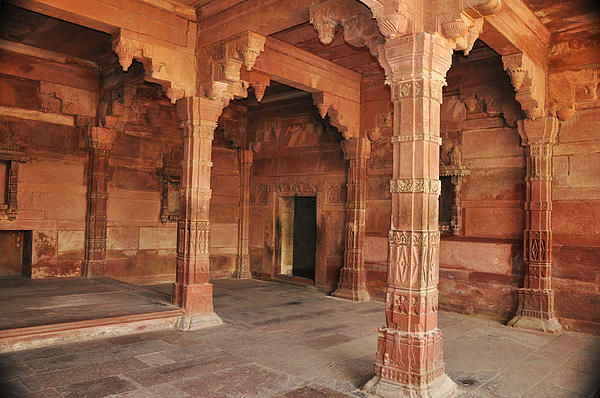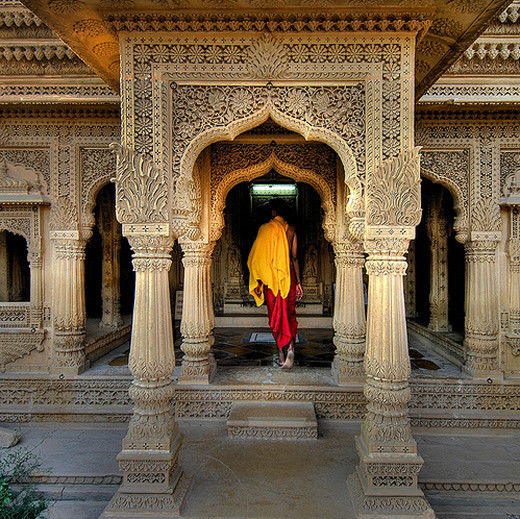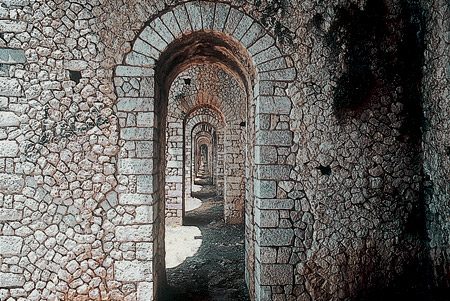Friday, November 25, 2011
Gothic Architecture and St. Denise
Tuesday, November 22, 2011
Romanesque in 19th century
Language of Romanesque had been brought back during 19th century especially for purpose of learning areas and buildings. First of all, the reason why monastery design is best for university is because the design of the church gives and transfers knowledge through its structure, e.g. tympanum, wall crafts, or sculptors; since in early days, churches were used as schools for children as well. Providing hugh space due to the layout of the monastery, it supports schools or universities needs in plenty of land for enough numbers of students each year and as well as gathering space. Not only beneficial to schools, students and colleagues would be more relax and happier when spending time at hugh schools with enough space for students use and school activities areas instead of a crowded one with limitation of land use. Also, the circulation designed of basilica tends to be well prepared for a big group of people, when having ceremonials, it helps reducing crowds and junctions within the school with a good people flow circulation. Furthermore, buildings are used to represent beliefs or religions as they indicate fame and popularity of each beliefs. At the same time, universities, schools, or education areas can simply show how famous and elegant the countries are since education is the basic standard that defines people. Therefore, the basilica forms were used even in 19th century due to its enormous space, well designed, and elegance in architecture.
Monday, November 21, 2011
influence of Greek architecture on Indian's




Monday, November 14, 2011
Ground Zero Mosque


Monday, September 26, 2011
Roman construction techniques



Monday, September 19, 2011
According to Le Corbusier

Zollverein School of Management and Design, Germany
The building is simply just a cube but what interests people is those tons of small square windows around the building. Those windows help with lighting as well as visual interest.

Midrand Water Tower, South Africa
It was designed as urban sculpture with a thought of functional and yet aesthetic structure. Capable of holding 6.5 megalitres, Southern hemisphere now have the largest water tower located in Midrand town, South Africa. The cone has 4 meters length in diameter stem with another 10 meters cube concrete base.
SPHERE

Dome of the Rock, Israel
It is the oldest existing Islamic building in the world located in Jerusalem, Israel. It is also known as the third sacred place for Muslims. The dome, or hemisphere, was widely used in Middle East to represent holy structures and as a place for worshipping and religious interactions.
CYLINDER

Faulx Les Tombes Castle, Belgium
The structure was built in 1872 by Hendrik Beyaert in a Gothic style. Big towers' shape is influenced by the primary form of cylindrical shape with an upside down cone on top of them.
PYRAMID

The pyramids of Menkaure, Khafre and Khufu, Egypt
The pyramidal shape was first invented by the Egyptians, as far from research, and mainly was constructed using stones. The shape consists of a square base with four subsided of triangle form, however, the steep of pyramids are vary.
Sunday, September 18, 2011
Greek architecture and the three order


The Parthenon is the most famous surviving building with the Doric order. It was built in the 5th century BCE to honor the Greek goddess Athena.
Ionic
Ionic column style looks more slender than Doric because the shafts are taller and the base are bulged out which made the column looks more straight. Comparing with Doric, Ionic column is more decorative with scrolls added to its capital. Also flutes, line carved on the column"s surface, were added to this style.
Ionic order

Example of Ionic columns in building
The temple of Athena Nike, Athens, Greece

It was he earliest fully ionic temple on the Acropolis where people used to worship the goddess in hope of the long war against the Spartans and their allies.
Corinthian
This style of column has highly ornate and is the most decorative and elegant fully with details, flowers and leaves, at its capital below the scroll. The column is also bulged out at its base making the column looks slender.
Corinthian order

Example of Corinthian columns in building
The Negaunee National Bank, Negaunee, Michigan

The state bank was constructed in 1912 after the old bank was destroyed by fire in the same year. The building hosted the Negaunee State Bank until the bank failed during the Great depression in 1933
over here, over there
Monday, August 29, 2011
HIstory of Egyptian Architecture, Aug 22
TIME CHANGED, ARCHITECTURE REMAINS
Many succeeding structures were influenced by Egyptian architecture especially for Pyramid shape design. Appearance and construction methods of the old creation still obviously remain, however, what differ with are upgrading materials and textures that adapt to fit into today’s luxury world
Pyramid-like..
The Louvre, Paris, France
The renovation of the Louvre Museum, installing a glass pyramid in middle of the court of Louvre Palace.
Ryungyong Hotel, Pyungyong, North Korea
The pyramid shaped building is a 105 stories building with a floor area of360,000 square meter. It is to be know as the largest building in North Korea with 330 meters in height.
Transamerica Pyramid, California, USA
It is a four-sided pyramid with two wings on each opposite sides. The structure is 260 meter tall with aluminum panels covered at the top of the building
future's projects
Not only until today that the pyramid shape is so inspiring, however, the popularity of this eternity-shape is still growing since many pyramid structures were planned to be built
Arabian Blade, Dubai
This future project is to be built in the oil-rich of Dubai and also a mixed -use tower
Shimizu TRY 2004 Mega-City Pyramid, Tokyo, Japan
Japan also planned to build this pyramid over the Tokyo Bay. The proposed structure is 2,004 meters tall which is 12 times higher than the Great Pyramid of Egypt in Giza. Upon the completion, the Shimizu Pyramid will become the largest man-made structure in Earth's history
Therefore, even time has passed century to century, Egyptian Architecture still enriches a significant role and popularity in modern architecture
over here, over there







